Content Evolution
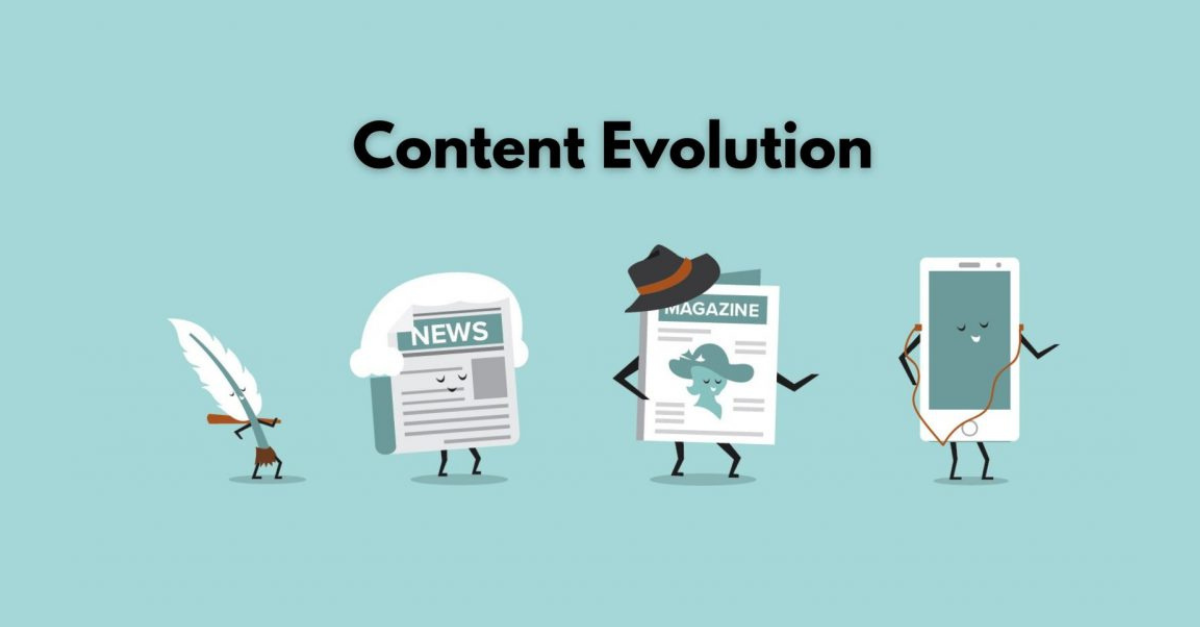
Golden Age Content
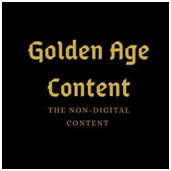
Introduction
Golden age content is all about reaching the masses, without any filtration. Old-age content was non-digital media. There wasn’t much to offer at that time, the cable TV (was one-way communication), no intelligent TVs (Internet TV), the radios, the newspapers. There was no demand or user-specific content to watch. In the old times, people used to believe “Television is the window to the world” but rather it was the closed one. The invention of Smart TVs tends to open that window.
Origin
The medium for mass communication is as old as the human species. The first form of content can’t be exactly named wall-carvings, manuscripts, sculptures all are one or another kind of content. Announcements made on loudspeakers, merchants or sailors or travelers bringing stories or writing letters was also one of the ways for reaching the audience. After all, everything is all about the viewers and listeners. Newspapers, radios, and TVs came into the picture a little after the 16th century. Maybe the old-age content isn’t exactly tempting but it was the building pillar for New-Age Content.
Types
- Recordings encoding data (sound) for storage on a storage medium.
- ★ Gramophones (Phonograph)
Are the flat discs that record sounds. It is an analog sound storage medium. It was invented in 1857 - ★ Cassettes
Like the phonograph, it is also an analog sound storage medium. Cassettes are magnetic tape. Cassette was invented back in 1963.
- ★ Gramophones (Phonograph)
- Print Media printed version of media, where a tangible copy is there.
- ★ Books
A form that is long and not always necessary to contain the news. Books can be informative, educational, or entertaining. According to UNESCO, a book should have at least 49 pages. - ★ Pamphlets
The pamphlet is an unbound short book (without any cover). It can single sheet of paper or can number of sheets, depending upon the requirement
(though, not more than 48 then it’’ be a book). It can be printed single-sided or double-sided, folded, unfolded, stapled, or unstapled. - ★ Flyers
It is a single or double-sided printed single sheet of paper. It can be used for advertisements or promotions or both. Flyers are used by companies, governments, NGOs, political parties, etc. - ★ Newspaper
The newspaper was first printed in 1556, by the government of Venice. A newspaper is a detailed description of news around the globe. - ★ Magazines
Another form of printed media which unlike the newspaper is printed on a weekly or monthly basis. It mostly contains some cover stories (mostly entertainment industry-related or coverage of the political event) and entertainment world-related stories, stories, or coverages for and by travel enthusiasts or about flooding. The first magazine was published in 1622.
- ★ Books
- Film Studios are companies that produce long-form programs, usually an hour or longer than that. They tend to have high budgets (millions of USD), tightly controlled distribution channels.
- Advertising Agencies are businesses/companies dedicated to creating, planning, and handling advertising/promotions/marketing for their clients. The advertisements in the old times were printed ads. However, in the late 19th-century, apart from being the printed media, the advertisements started to appear on billboards, then there were audible commercials on Radio and visual commercials on TV. Traditional television advertising was one-way video commercials, where companies used to promote their services and products.
- Radio Broadcasting is a way to broadcast information/message/music/data, even sometimes metadata obviously in sound form, through radio waves using the radio receivers. The first radio used to send signals was in 1900.
- TV broadcasting is about distributing TV signals/content through radio waves. The content included black and white videos, silent films before colorful and sound films came into the picture. The first time the TV was used was in 1884.
- Billboards (Hoarding) is a large outdoor advertising structure generally found in high-traffic areas such as alongside busy roads. Hoardings present large advertisements to passing pedestrians and drivers. Showcasing witty slogans and distinctive visuals to attract the audience and customers.
Devices/Medium
Print Media
Newspaper
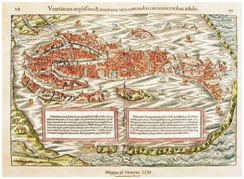
Newspaper is a collection of printed A1 size sheets bundled together. It contains detailed happenings, incidents that have taken place across the world. The newspaper was first printed in 1556, by the government of Venice.
Facsimile Newspaper – is a newspaper that contains copies of important historical papers.
Magazine
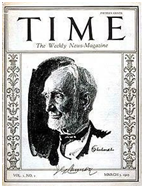
Pamphlets
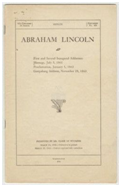
Another form of printed media which unlike the newspaper printed on a weekly basis or monthly basis. It mostly contains some cover stories (mostly entertainment industry-related or coverage of the political event) and entertainment world-related stories, stories, or coverages for and by travel enthusiasts or about flooding. The first magazine was published in 1622.
The pamphlet is an unbound short book (without any cover). It can single sheet of paper or can number of sheets, depending upon the requirement (though, not more than 48 then it’’ be a book). It can be printed single-sided or double-sided, folded, unfolded, stapled, or unstapled.
Flyers
It is a single or double-sided printed single sheet of paper. It can be used for advertisements or promotions or both. Flyers are used by companies, governments, NGOs, political parties, etc.
Books

A book is a medium for recording information in the form of writing or images, typically composed of many pages bound together and protected by a cover. A form that is long and not always necessary to contain the news. Books can be informative, educational or entertaining. According to UNESCO, a book should have at least 49 pages. As an intellectual object, a book is prototypically a composition of such great length that it takes a considerable investment of time to compose and a still considerable, though not so extensive, investment of time to read
Recording
Phonograph

A phonograph record /gramophone record is an analog sound storage medium in the form of a flat disc with an inscribed, modulated spiral groove. The groove usually starts near the periphery and ends near the center of the disc. At first, the discs were commonly made from shellac; starting in the 1940s polyvinyl chloride became common. It was first invented in 1857.
Cassettes

Theatres

Like the phonograph, it is also an analog sound storage medium. Cassettes are magnetic tape. Cassette was invented back in 1963.
Film Studios
A theatre is a place where films/movies are showcased or released. Movies released stay on the screen for some time. Sometimes they stay for months or sometimes they don’t even last for weeks.
Radio Broadcasting
Radio

TV Broadcasting
TV

Television is a telecommunication medium used for transmitting moving images in monochrome (black and white), or in colour, and in two or three dimensions and sound. The TV is a mass
medium for advertising, entertainment, and news. After many transformations in the 1920s, the first full-fledged TV was made.
Advertisement
Hoardings/Billboards

Hoardings is a large outdoor advertising structure generally found in high-traffic areas such as alongside busy roads. Hoardings present large advertisements to passing pedestrians and drivers. Showcasing witty slogans and distinctive visuals to attract the audience and customers.
New-Age Content
Introduction

New-age content is not at all about reaching the masses, it’s about delivering the desired media content to everyone and keeping them interested, and of course, it offers filtration. New-age content is digital media or you can call new-age content digital content as well. There is so much to offer and so much to take that viewers go gaga over the options. There are intelligent TVs (Internet TV), not just the radios rather the home theatres, music players, and if you want you can listen to the radio on your smartphones as well and there are podcasts, the newspapers, the newspapers. There is a lot of on-demand or user-specific content to watch, now people believe
“Internet TV is the open window to the world”.
New-age content is a modified, filtered, and much-loved version of old-age content. New-age content has on-demand TVs shows, movies, web series, web movies, and much more. And that too is available on many devices. The game-changer for new-age content is Internet TV.
Internet TV System is a transmission system that provides the video and audio (just like normal television, old age TV) information on a communication channel that is delivered through the Public Internet. This information can be viewed in a computer, standard TVs (using an adapter or set-up box), or other types of multimedia devices that can receive streaming video signals (such as game consoles). Internet TV is also referred to as Over The Top Television (OTT) because TV signals travel over the top of the Internet rather than through a broadcast television system.
Internet TV Signals travel across the world, connecting many types of devices. This opens the door to individuals and companies to become global television providers virtually. It is similar to old broadcasting TV stations in all aspects except for the use of the Internet for sending
signals and broadcasting the content. Internet TV isn’t restricted only to TV devices; it also includes smartphones, computer systems, game consoles, and home theatre, in short, every device that can access the Internet can be an Internet TV. As every device is now TV people started taking career options in smartphone application development, smart TV app development, etc. seriously.
Origin
The origin of new-age content goes back to the 1980s. And by the 2000’s it became worldwide. Over-the-top content is an inseparable part of the new-age content. It refers to the way content is distributed to users, content distributed over the top of the Internet rather than broadcasting through television stations.
New-age content originated from live TV networks like CNN, CBS and transformed into on-demand content producers like micro-producers. After the new-age content came into the picture and so the Internet TV, the latter can deliver an unlimited number of channels as each TV set requires at least one TV channel connection, which in turn can be linked to any other TV source (which is provided by any TV service provider) over the Internet. From 2002 to 2016 the popularity of new-age content, the demand for it, and on-demand shows increased to 71%.
Types
New-age content types vary from media developed by movie studios to network TVs to user-generated content (UGC) to traditional TV content, which rebroadcasts TV programs to highly specialized programs that appeal to small groups.
Movie Studios Content
Movie Studios are companies that produce long-form programs, usually an hour or longer than that. They tend to have high budgets (millions of USD), tightly controlled distribution channels. Distribution of Movie Studios content is divided into release windows –
- Movie theatres (pay per view)
- Premium TV channels (such as HBO, WB)
- Stored media (DVD, Blu-Ray)
- Other distribution channels pay for the content.
Movie studios limit the distribution of their premium content to more controlled and highly profitable channels before making it available on Internet TV.
Network Television Media Content
It is an organization that creates and provides programming to local broadcast distribution systems (TV affiliate networks). Local broadcasters contribute to the cost of developing or acquiring network program content (TV shows).
Network TV content is primarily paid for by advertisers. And the redistribution of network TV programs through Internet TV channels benefits the advertisers. Network TV operators usually disallow the distribution of their live content or recent content on Internet TV (like live TV shows uploaded on the Internet almost after 8-10 hours) because then it’ll be difficult to earn advertising revenue on channels that can’t be measured, and the distribution can be a competition with the content already existing on Internet TV channels that already have access to the content and paying the channels.
Content By Independent Producers
Independent producers are companies or people that produce programs or content that can be sold or licensed to other companies (like recorded plays, short movies) who can, in turn, sell their content to bigger companies for money and better profit.
Independent producers tend to create special content in varying lengths. This content is shown in Film-Festivals to attract potential buyers or distributors. And they usually distribute content on Internet TV to gain publicity for programs.
Organizational Content
This is media produced by companies or groups to help promote their products or services or to communicate messages. For example – advertisement movies, inspirational advertisements about traffic rules, etc.
Previously organizations used to have limited distribution options for their content. Now, organizations are willing to develop more content than in the past and provide it to Internet TV for better distribution. These organizations sometimes get their web applications developed and allow access to only the target audience by sharing the URLs or sometimes making the application payable to earn some extra bucks.
User-Generated Content (UGC)
It is a piece of content information that is produced by users of similar content like – nowadays people produce their own videos on YouTube. A major portion of user-generated content is suitable for Internet TV distribution. Generally, the cost to acquire the rights to such content is low.
UGC creators are unskilled in media production and they may not have acquired the necessary rights like –
- Location Rights
- Release Forms
- Music Rights
to use in the content they have created.
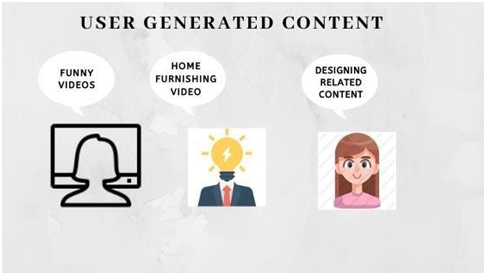
Content Channels Types
Channels type includes linear (scheduled), on-demand, public and private.
Linear Channels
This kind of channel contains programs that are sent in a “defined time sequence”. Linear channel programs are a mixture of live content and scheduled content. These programs are controlled by a playout system. The playout system identifies and selects the programs to buy or stream during predetermined time slots.
On-Demand Channels
The on-demand channel is all about providing or making programs available that can be interactively requested and received by users. On-demand channels provide programs in continuous (streaming) or downloaded formats. Viewers (or their intelligent devices) control the selection and request of the playout of on-demand programs and content.
Public Channels
It contains programs or content made available to the public or any person in general. One of the best examples is – broadcasting of television coverage of an event available to the public, to everyone who can access the TV.
Private Channels
It has programs or content which is made available to a few people, which are authorized to receive the content. For example – broadcasting of TV coverage of a specific company event to employees of the company that are registered for access to the content.
Services – Fusion of old and new (Services to provide content)
New content services, ways to avail offers and entertainment, news, and many more include
broadcast (free), subscription services to television commerce.
Broadcast (free)
Content that is broadcasted is usually free of cost or is available at minimal cost and can be viewed by the mass, is available publicly.
Subscription Services (controlled access)
This allows customers to pay a monthly or annual fee for access to the content they want to view.
Advertising Services (video or other forms)
It can range from traditional one-way insert services to interactive advertising services, including video advertisements.
Pay-Per-View (On-demand)
Pay-per-view programming charges customers or sponsors a fee for every view just like the movie in the theatre.
Television Commerce (Direct Sales)
Television commerce produces revenue from the direct sales transactions that occur through Internet TV Systems.
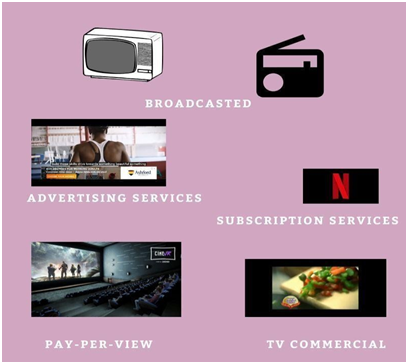
Evolution Of Broadcasting
Broadcast services are the transmission of an information signal to devices/people that can receive or connect to broadcast sources. Broadcasting allows the same information/video/audio to be viewed by all customers (mass), that can successfully receive or decode the information.
For example – people living within the same geographic area can receive a radio signal. Just like content broadcasting has also evolved.
Internet TV
Internet TV provides broadcast services by allowing devices to connect to video servers that are providing the same media to all users.
Linear Channels
Linear channels programs are telecasted in a defined time frame. It may contain previously recorded media or live content. Live content is broadcast after a short delay so that censoring can be done like muting inappropriate words or blurring images. This way is somewhat similar to old-age content broadcasting, the only difference is the content type.
Sponsored Programming
Sponsored programs are media items like movies, games, etc. which are provided to customers and paid by companies/ people other than consumers.
Companies pay to sponsor the creation of programs that are a reference or use their products/services. For example – A car manufacturing company pays to sponsor an F1 race that regularly/exclusively uses their cars.
Advertising Funded
Advertising funded program is broadcasted or downloadable media content that is paid by companies/ people other than the broadcasting entity that is transmitting the content. Some Internet TV broadcasters require their viewers to watch advertisements prior to granting access to the programs.
Free View
It is a service that provides media content to viewers at no cost. Development and broadcasting fees of Free-View Content are paid by advertising or grants.
Subscribed Services for the Desired Content
These are the value-added services that provide or entitle a customer to receive or gain access to the services or content they desire to watch. Paid subscription services are available on a periodic basis or at different rates which may be charged for groups of services (tiered programming).
Subscription Accounts
Subscription accounts are a unique identifier that designates a customer or company that has been established or subscribed to the content, allowing them to continue to receive products or services that are billed to their account.
Premium Channels
Premium channels provide media services (TV programs etc) that are offered as a supplement or upgrade to the other provided services. Usually, provided as
- A bundled package (multiple channels)
- Available on a per-channel subscription basis
- Pay per view basis
Premium channels are usually available in the form of applications. Smart TV applications developed for almost all the premium channels, then there are web applications, Smartphone applications for these channels as per the customer’s need.
Tiered Services
Programming tiers are the grouping/partitioning of channels into specific category levels that have similar service offers or content characteristics. Tiered pricing is the assignment of value to products or services that are offered for sale. Tiered pricing varies with a specific characteristic range (here, tiers).
The Desired Content Services (On-demand)
On-demand programming is the provision or availability of programs that can be interactively requested and received by the users. On-demand services are provided using a switched video service that connects the viewer to a live stream or to content that can be downloaded and viewed later on. On-demand services are billed as –
- PPV (pay-per-view)
- PPP (pay-per-period) on an hourly or monthly or annually basis.
Switched Video (Switch Video Service)
Switch Video Service (SVS) is a process that can dynamically set up (on-demand) video signal connections between two or more points. It can range from the setup of data connections that are allowed for video transfer to the organization and management of video content and the delivery of video programs.
Live Streaming
It is a process of transferring audio or video streaming however the viewers have no control over the playback time of the media. The clients can’t control when the stream starts, can’t pause, skip a certain part, and so on.
Download and Play
Process of downloading a media program (audio/video files or both) and once the file has been completely downloaded, start playing it. The user can control the downloaded file, performs actions on it like rewind, pause, stop, replay, etc.
Pay Per View (PPV)
PPV services supply television programs such as sports, movies, and other entertainment videos
that customers view on a per-event basis and pay for it every time they watch it.
PPV services allow end-users to interactively request and receive television channels or programs. It ranges from previously stored data (movies/educational videos) to accessing live connections (news events/sports events happening in real-time).
PPV services also allow other companies (sponsors) to pay for the services in return for branding opportunities or the sharing of viewing data.
Pay Per Period (PPP)
Pay per period services are about granting permission to the viewers to have access to the content they paid for over a definite period of time. For example – permission to watch a movie for a fee, such that access is only granted for a definite time period like for 24 hours or watching Netflix on a monthly or annually basis.
Pay Per Time (PPT)
Pay per time is a subcategory that comes under Pay Per Period. Pay Per Time may begin immediately as you subscribe to the content/services like iTunes or after a specific time like Amazon Prime Video the pay per time starts after a free trial of one month. Or it’s like going to the movie theatre, every time you go there you have to pay regardless of the movie or the time frame.
Advertising
Advertising just like the old times is still a very crucial part of the content and media. Advertisements of the new age are a mixture of traditional television advertising (one-way video commercials, where companies promote their services and products), old age commercials, and interactive internet advertising (two-way marketing, where companies are open to feedback and interact with the consumers).
Internet TV (new-age content) offers venerable advertising services through
- Targeting specific viewers based on their recent search.
- Ad customization (branding and changing offers)
- Interaction (the ability for viewers to directly respond to the ads).
Interstitial Advertisement (Interruption)
This kind of advertisement is the temporary display of advertising messages in between the requesting and opening/closing of the web pages on TV or any other device through which you’re accessing the content.
A few points to distinguish them –
- Usually appear for a short time period, somewhere in between 5-10 seconds.
- Some of them include a link that allows the viewer to bypass the advertisement message.
Overlaying Advertisement
An overlaying ad is a promotional message that is inserted on top of another media item, usually the videos. The ads show up for 15 or so seconds into the videos or other media. The inserted items on the media can be –
- Logos
- Images
- Scrolling text
- Ticker
- Watermark image
Overlay advertisements are of two types –
- Solid
- Transparent
Skin Advertisement
A skin ad (also called a background ad, a site takeover ad, or a bookend ad) appears in the background on both sides of the web page and it is clickable. This ad form uses CSS, HTML, and JavaScript code to set the background image and make it clickable. These are promotional
messages or images for any item or services that appear in the area surrounding the viewer’s media player window.
New Age Content Makers
Content producers/makers are generally companies or developers who create professional high-value content that is later on distributed or broadcasted to the masses. Content producers tightly control release schedules, to maximize the revenue potential of the content that is being produced and distributed. Tightly controlled release schedules include distribution to high-value restricted channels first like movie theatres or online-media streaming channels.
Movie Studios
Movie studios are companies or facilities that are used to produce long-format programs (one-hour plus). Movie studios are made up of one or more rooms or sets that are designed for the recording of video or audio. They usually use scheduled release windows for their content. They always look for new, high-value distribution channels, premium (high profit) early release of the content via secure Internet distributors.
Syndicates
Syndicates are companies or organizations that are formed to represent a common interest to multiple parties.
Initial programs created by syndicates may be exclusively licensed to distributors such as TV networks that can limit their interest and ability to allow their content to be distributed on Internet TV systems. They readily provide older syndicated programs for distribution, as they have little value to TV networks due to niche audience appeal. The niche public may have specific desirable demographics (older TV shows) that advertisers find highly valuable.
Production House
Organizations that create content only when they are asked to. They identify and perform tasks to produce products or services as per the directions. Production companies –
- Scout / book locations
- Plan shoots
- Cast talent
- Supply crew and film
- Provide equipment for shooting
- Supply and obtain props
- Shoot programs
- Provide footage
Content that is created by PC (production company) tends to be exclusively owned by the company that contracted the production house.
In some scenarios, content ownership or distribution rights sometimes revert back to the production house after a period of time or if the company that engaged the PC is no longer in the business, etc.
Television Networks – bearer of the new age content
Television networks are the systems that provide multiple channels of programs/ content to affiliate distribution partners/local broadcasters. Content that TV networks provide tends to be produced by other companies. TV networks select and schedule the content before broadcasting on TV channels (network feeds) that are provided to local broadcasters (affiliates). TV networks sell advertisements that are included in the TV channels.
Network Affiliate Distribution
Network affiliates are the broadcasting companies that have a content distribution relationship with the network. It receives the content from a network provider in return for a combination of money and advertising time. Some Internet TV access providers have become distributors for TV networks like Hulu etc.
Network Content Types
TV networks commonly provide a mixture of rebroadcasted content and original programs, as well as series programs (TV shows) that appear at a fixed/scheduled time.
Network Feeds
Network feeds are communication lines from TV networks that carry multiple channels for content (programming) throughout the day. Local broadcasters rely on networks to provide programming content that will be of value to their local viewing audience. TV networks already provide direct internet access to their network feeds (simulcast Internet Streams). TV networks sometimes limit the redistribution of their network programming to protect the viewership of their associates and keep viewers out who directly connect to their streaming sources to themselves.
Advertisement Spots
TV network content is provided with TV commercials (ad spots), which are already inserted. TV networks sometimes allow the local broadcasters to replace some of the national ads with local commercials (about 10%-20% of the advertisement slots).
Carriage agreements (distribution agreements) commonly define that the distribution networks and local broadcasters are not allowed to alter the content that is provided by the TV network. And internet TV broadcasters are not authorized to replace or insert advertisements (such as overlay ads) in the TV network content.
Devices
Smart TV
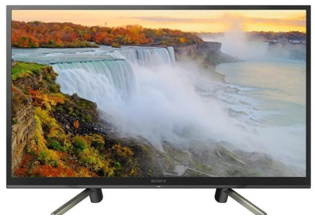
A Smart TV, also known as a connected TV (CTV), is a traditional television set with integrated Internet and interactive Web 2.0 features that allow users to stream music and videos, browse the internet, and view photos. Smart TV is a technological union of computers, television sets, and set-top boxes. Besides the ancestral purposes of television sets and set-top boxes provided through traditional broadcasting media, these devices can also provide Internet TV, online interactive media, over-the-top content (OTT), as well as on-demand streaming media, and home networking access. Smart TVs may be thought of as an information appliance or the computer system from a mobile device integrated within a television set unit, as such a smart TV often permits the user to install and run more advanced applications or add-ons based on a particular platform. Smart TVs run on completely different operating systems than mobile operating systems providing a platform for smart TV application developers as well.
Top smart TV manufacturers are –
- Samsung
- Apple
- Roku
- TLC
- Sony
As being one of the top manufacturers of smart TVs Roku developers keep updating their OS and other tools to help ARM developers to build better and earn better.
Set-Top Box
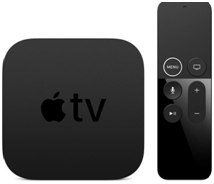
Set-top box sometimes also referred to as Internet set-up box (because for the normal TVs i.e the TV without the OS or internet connection they serve the purpose). They are also called digital media adapters. A Digital Media adapter is an electronic device that decodes the Internet Communication Medium to play the content in a format viewable/understandable to the users.
The outputs provided by the digital media adapter are in the form of
- Television RF (radio frequency) channel
- Analogue video
- Audios
- Videos
Top set-top box manufacturers are –
- Arion Technology (South Korean MNC)
- Roku (American Company)
- Apple (American Multinational Technology Company)
- Western Digital (American Company)
- Airtel (Indian Company)
Dongles (Media Stick)

These are small accessories usually of small sizes, like a piece of chewing gum. This device is attached or inserted into a view device (usually a TV set). Dongle receives streams directly from an Internet TV service provider or streaming signals from nearby devices like smartphones or tablets. The dongle must be set up first for the Internet TV so that it can work properly.
Top dongle manufacturers are –
- Amazon – Amazon FireStick
- Roku
- Alticast
- Transmart
- Rikomagic
- Apple
Some of the Internet TV service providers that allow direct streaming to dongle are –
- HBO Now
- NetFlix
- Google TV
- Amazon Prime
Hybrid Set-Top Box (HSTB)

It is an electronic device that adapts multiple types of communication mediums to a format that is accessible by the end-users without any chaos. Use of HSTB allows users –
- To directly access the broadcast content from terrestrial satellite systems
- To access other types of systems such as Internet TV via a broadband connection or WiFi.
HSTB allows embedding of media and links in the broadcast signal which can be used to enhance the viewer’s TV media experience.
Top HSTB manufacturers –
- EKT
- Pace
- Humax
- Roku
- Comcast
All the smart TV applications developed can be accessed by HSTB.
Personal Computers
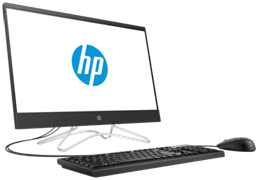
Personal computers with multimedia access and an internet connection can no doubt access new-age content easily. It is possible to watch Internet TV through media player software programs and some advanced browsers. And when you use a PC as a source of Internet TV you don’t need to worry about the cost of a set-up box and it’s more capable of STB (set-top box) in many ways. PCs support more websites than smart TVs for accessing Internet TV. No doubt a PC has higher storage capacity in comparison to a smart TV. The top 5 manufacturers of personal computers are –
HP (Hewlett-Packard)

Lenovo

Dell

Apple

Asus

SmartPhone
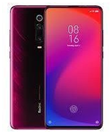
Smartphones are wireless communication devices, capable of receiving and displaying digital media such as audio, videos, etc. Multimedia Mobile Phones have one or more broadband connections to access the internet or WiFi connections. New generation smartphones have embedded software that allows them to receive and decode digital media. And as the smartphone is a pocket TV, people are looking for thousands of options to use it with ease. Hence making mobile application development a great business as well as an opportunity for the Java developers to grow and learn new languages.
The top 5 manufacturers of smartphones are –
Apple

Redmi

Samsung

Huawei

Xiaomi
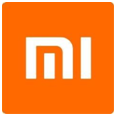

A freelancing blogs and e-books writer who keeps you up with the trending technologies and user guides. A blogger who is currently a post-graduate living in United Kingdom and trying to make her niche as a Data Scientist. Before taking a deep dive into the "Data-World", she got a Bachelor's Technology degree in Computer Science and has always dreamed of writing as a kid which inspired her to write wonderful content with the right amount of technical terms to make it easy for the beginners and as well full-fledged developers to grasp a hold onto the computer technologies.